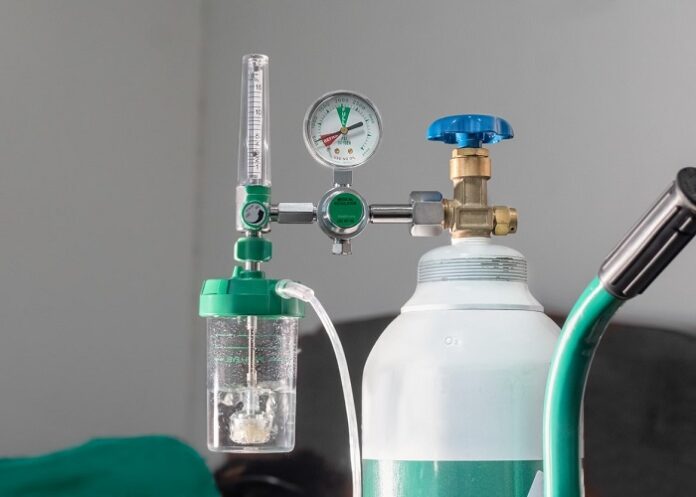Oxygen is vital to many medical procedures. But a safe, affordable supply is severely lacking around the world, according to a new report.
At the height of the Covid-19 pandemic, millions of people in poor nations died literally gasping for breath, even in hospitals. What they lacked was medical oxygen, which is in short supply in much of the world.
On Monday, a panel of experts published a comprehensive report on the shortage. Each year, the report noted, more than 370m people worldwide need oxygen as part of their medical care, but fewer than one in three receive it, jeopardising the health and lives of those who do not. Access to safe and affordable medical oxygen is especially limited in low- and middle-income nations.
“The need is very urgent,” Dr Hamish Graham, a paediatrician and a lead author of the report, told The New York Times. “We know that there’re more epidemics coming, and there’ll be another pandemic, probably like Covid, within the next 15 to 20 years.”
The report, published in The Lancet Global Health, comes just weeks after the Trump administration froze foreign aid programmes, including some that could improve access to oxygen.
Boosting the availability of medical oxygen would require an investment of about $6.8bn, the report noted. “Within the current climate, that’s obviously going to become a bit more of a challenge,” said Carina King, an infectious disease epidemiologist at the Karolinska Institute and a lead author of the report.
Still, she said, governments and funding organisations should prioritise medical oxygen because of its importance across healthcare. People of all ages may need oxygen for pneumonia and other respiratory conditions, for severe infections including malaria and sepsis, for surgeries and for chronic lung conditions.
“We’re not pitting oxygen against other priorities, but rather that it should be embedded within all of those programmes and within those priorities,” King said. “It’s completely fundamental to a functioning health system.”
Medical oxygen has been used for more than 100 years, often for treating patients with pneumonia. But it was added to the World Health Organisation’s Essential Medicines List only in 2017.
Early in the pandemic, Every Breath Counts, a coalition of more than 50 organisations, pushed for increased access to medical oxygen. By the end of 2022, an emergency task force had mobilised more than $1bn worth of medical oxygen equipment and supplies to more than 100 countries.
One country that has made substantial investment in improving oxygen access is Nigeria, which had taken steps in that direction even before Covid.
Nigeria has set up about 20 cost-effective plants for generating oxygen on-site for hospitals, and is exploring liquid oxygen plants that can supply large swaths of urban areas, said Dr Muhammad Ali Pate, the country’s Minister of Health and Social Welfare.
Many hospitals do not have systems that can deliver oxygen reliably, “so that is sort of a design and a legacy issue we have to deal with”, he said. “There’s more that needs to be done.”
Modifying hospital systems to deliver oxygen can pose engineering and market issues, and delivering oxygen requires infrastructure that can transport heavy oxygen tanks for long distances.
Even once oxygen supply is assured, the equipment to deliver the oxygen directly to patients must be routinely maintained and cleaned, and spare parts may take months to be delivered. Healthcare workers must be trained to use the equipment effectively.
“We’ve seen so much investment in equipment, but very little investment in how to operationalise that equipment sustainably,” King said.
Healthcare facilities also require pulse oximeters to screen and monitor blood oxygen levels during treatment. But in low- and middle-income countries, pulse oximetry is used in fewer than one in five patients in general hospitals, and it’s almost never used at primary healthcare facilities, according to the report.
The panel included testimonials from patients, families and healthcare workers who have struggled with the oxygen shortage. In Sierra Leone, before the Covid-19 pandemic, only one public hospital in the entire country had a functioning oxygen plant, resulting in thousands of avoidable deaths.
In Pakistan, a man with a chronic lung condition said that he stayed indoors and avoided stairs to prevent his lungs from rupturing under the strain. He had to borrow money from friends and family to pay the $18 000 cost of treatment at home.
In Ethiopia, a doctor was forced to take oxygen away from one patient to treat another who was more desperately ill. “It was very heartbreaking trying to decide who lives and who dies,” he said.
The New York Times article – An invisible medical shortage: oxygen (Restricted access)
See more from MedicalBrief archives:
How rural Eastern Cape hospital produced own oxygen during COVID
Indian hospitals approach court to resolve oxygen shortages
Eastern Cape hospitals crisis: ‘Patients fight one another for oxygen’
Warning over portable oxygen devices sold online after US study
SA doctors and engineers invent revolutionary oxygen delivery device

